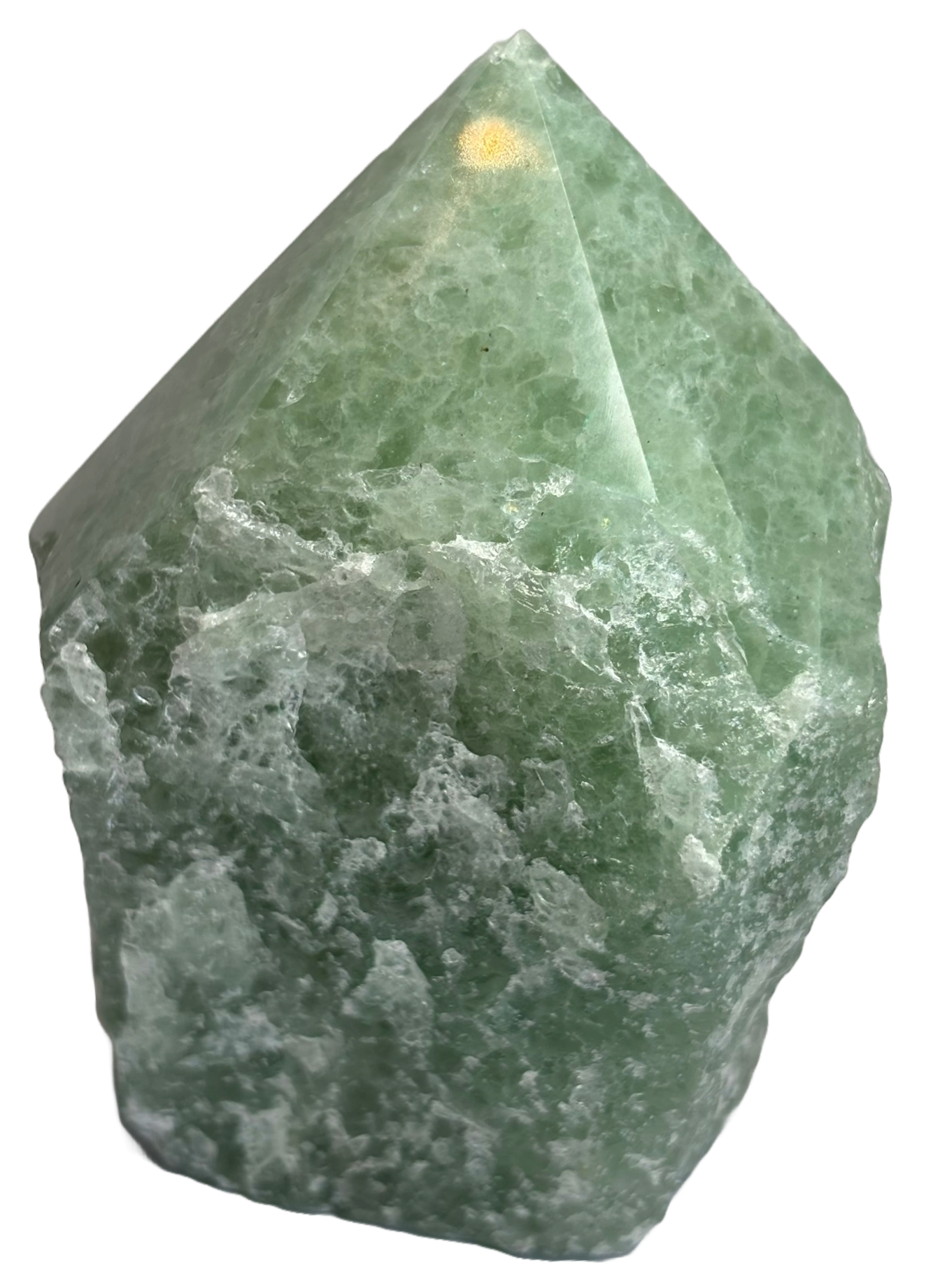
Amazonite derives its name from the Amazon River, although no significant deposits exist in that region. The stone’s vibrant green to blue-green hue evokes the lush waters of the legendary river. Historically, it was known as “Amazon Stone” and has sometimes been confused with jade due to its similar appearance.
Composition, Physical Characteristics, and Varieties
Amazonite is a variety of microcline feldspar with the chemical formula KAlSi₃O₈. It exhibits a striking blue-green hue caused by trace amounts of lead and water within its crystal structure. The mineral has a vitreous lustre and measures 6 to 6.5 on the Mohs hardness scale. It displays a perfect cleavage, making it somewhat fragile and prone to breakage. Some specimens reveal a schiller effect, where light shimmers across their surface.
Amazonite varies in saturation, ranging from pale turquoise to deep teal. The presence of white streaks or veins from feldspar inclusions can create a marbled effect. The finest quality stones often possess an even, intense colour with minimal inclusions.
Geographical Locations
Significant deposits of amazonite exist in various parts of the world. The most notable sources include:
- United States – Colorado, Virginia
- Brazil – Minas Gerais
- Russia – Ural Mountains
- Madagascar
- India
- China
- Mongolia
- Canada These locations provide high-quality amazonite, sought after for both ornamental and metaphysical purposes.
Archaeological and Significant Finds
Ancient civilisations treasured amazonite for its aesthetic and mystical properties. In Mesopotamia and Egypt, artisans carved the stone into amulets, seals, and jewellery. Amazonite beads were discovered in the tomb of Tutankhamun, signifying its high value in ancient Egyptian culture. The stone also featured in tablet inscriptions, with some scholars believing it formed part of the fabled Breastplate of the High Priest in biblical lore.
Today, amazonite remains popular in lapidary work, from cabochons to decorative carvings. Modern artisans incorporate it into jewellery, sculptures, and spiritual tools.
Amazonite Interesting Facts
- Amazonite’s distinctive colour was initially attributed to copper, but later studies revealed lead and water molecules as the cause.
- In some regions, it is known as the “Hope Stone,” symbolising optimism and emotional balance.
- The mineral was historically misidentified as turquoise or jade due to its colour.
- Amazonite exhibits pleochroism, shifting hues under different lighting conditions.
- The stone often forms in association with smoky quartz, albite, and feldspar minerals.
Folklore, Legends, and Tales
Amazonite carries a rich history in myth and legend. Some traditions link it to the fabled Amazonian warrior women, believing they adorned their shields and jewellery with the stone for courage and strength. Russian folklore associates it with prosperity, often referring to it as the “Stone of Success.”
Ancient Egyptians revered amazonite as a stone of protection and divine communication, engraving prayers onto its surface. Many cultures considered it a talisman for truth and harmony, promoting clear speech and honesty.
Mystical Healing Properties
In metaphysical traditions, amazonite is believed to balance energies and soothe emotional distress. Its calming influence helps alleviate anxiety, stress, and emotional trauma. The stone is associated with:
- Enhancing self-expression and truthful communication
- Dispelling negative energy and electromagnetic smog
- Supporting personal growth and self-discovery
- Promoting harmony in relationships
- Encouraging rational thought and intuition
Astrological and Zodiac Links
Amazonite aligns with the zodiac signs Virgo and Aquarius. Virgos benefit from its balancing energy, which tempers perfectionist tendencies, while Aquarians find it enhances their natural intuition and communication skills. The stone resonates with Uranus, the planet of innovation and change, reinforcing its role in fostering adaptability and self-awareness.
Chakra System Connections
Amazonite primarily connects to the Heart Chakra (Anahata) and Throat Chakra (Vishuddha). It encourages emotional healing, self-love, and open-hearted communication. Meditating with amazonite over these chakras is said to clear blockages, allowing for authentic self-expression and deeper interpersonal connections.
Birthstone and Wedding Anniversary Link
Although not a traditional birthstone, amazonite is sometimes associated with September due to its calming and truth-enhancing properties. It is also given as a gift for the 6th wedding anniversary, symbolising enduring love, harmony, and open communication.

Amazonite
Soothing and empowering, Amazonite calms the nervous system and balances energies. Promotes truth, harmony, and inner confidence with tranquil strength.
